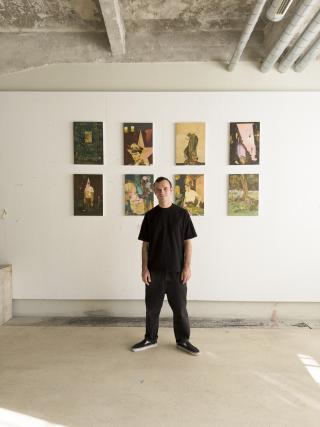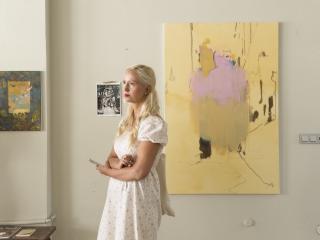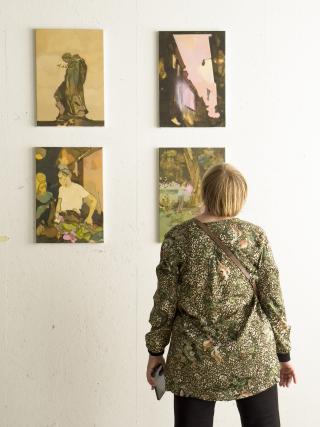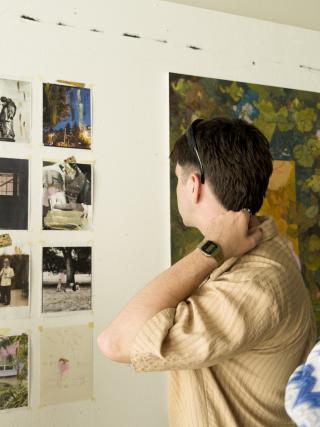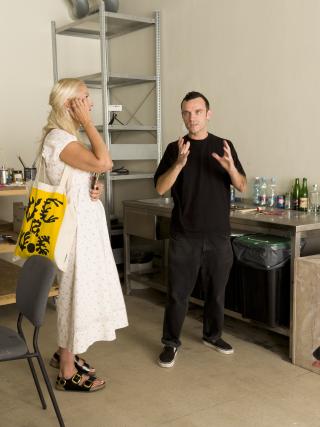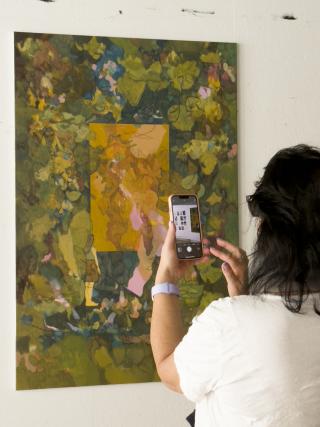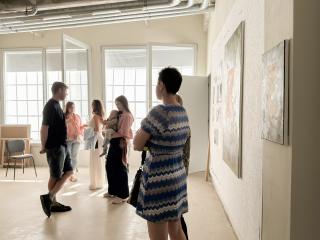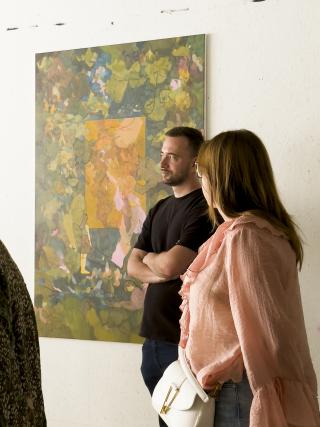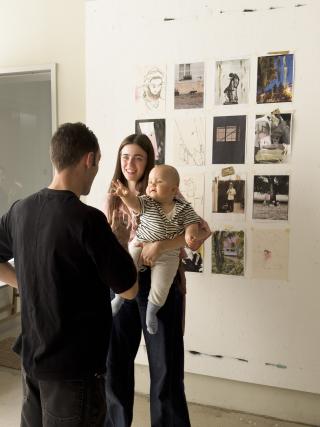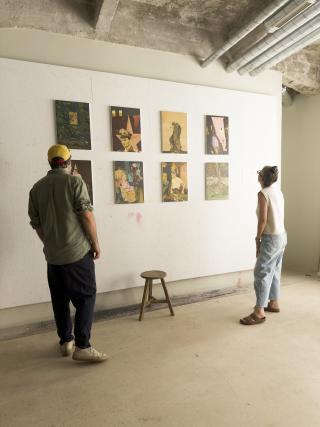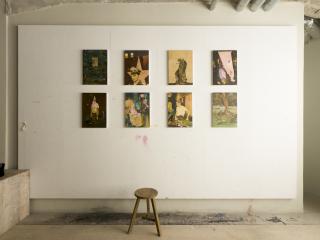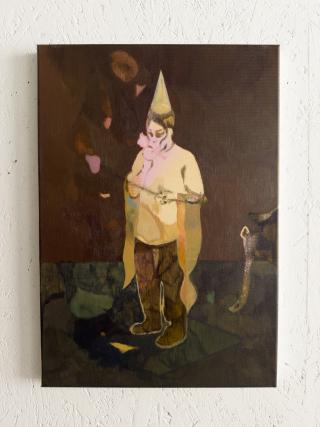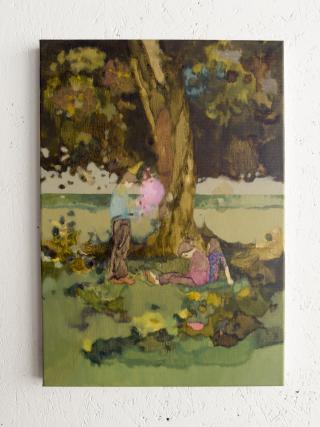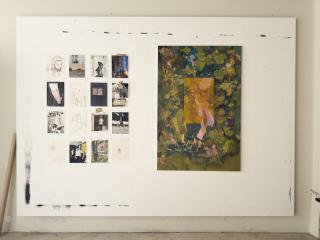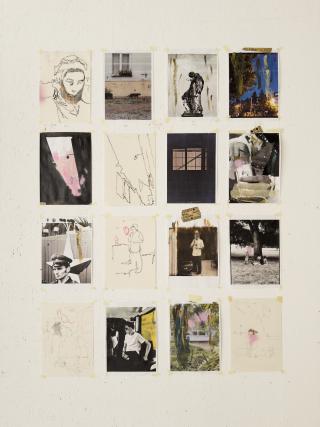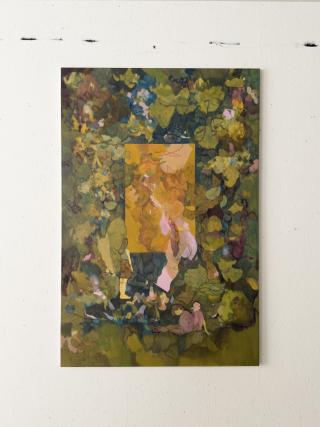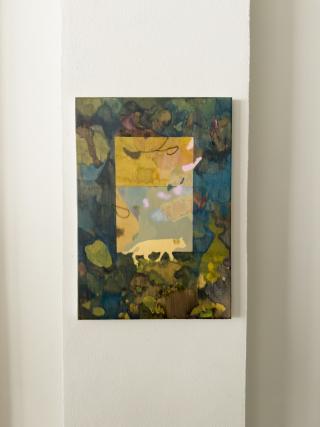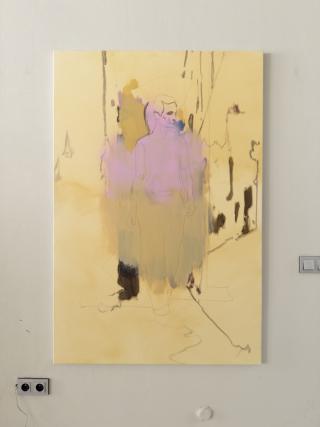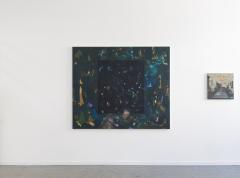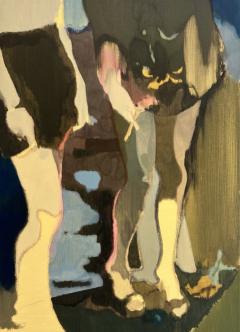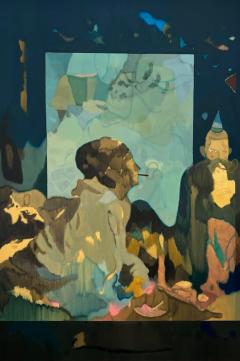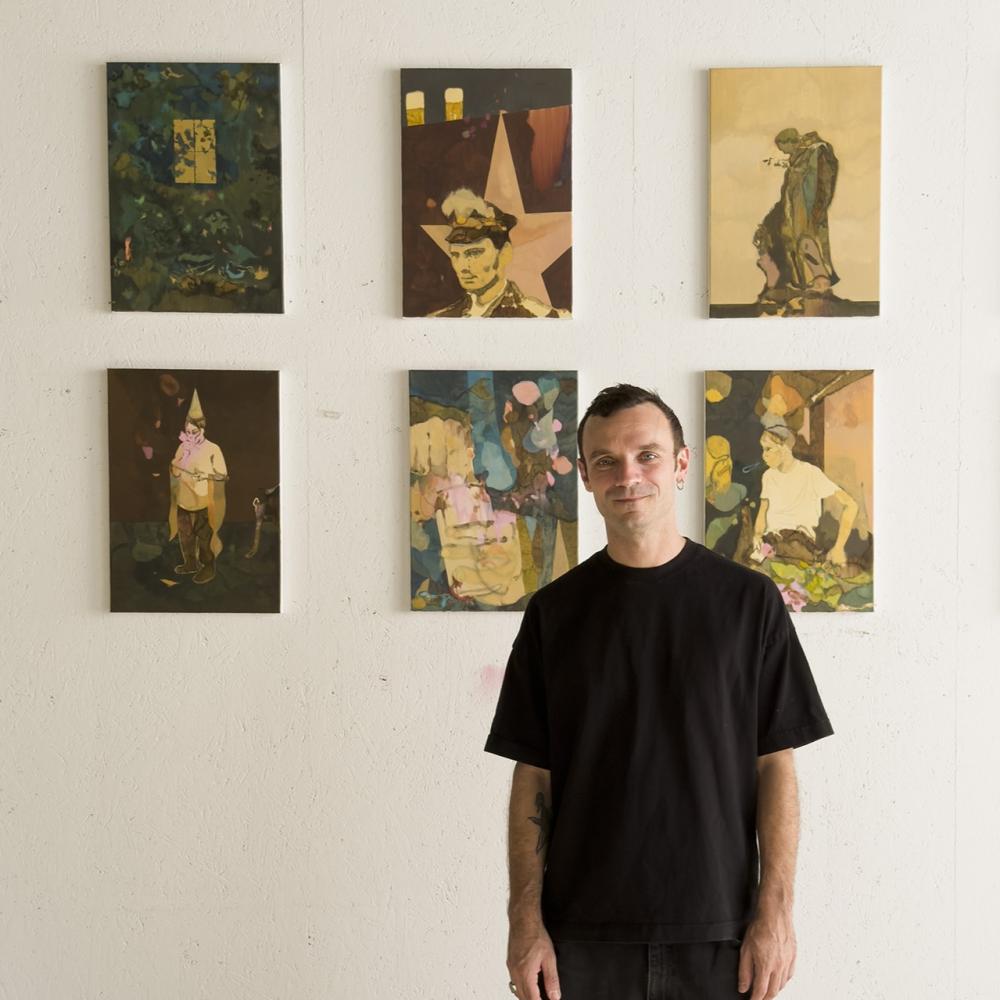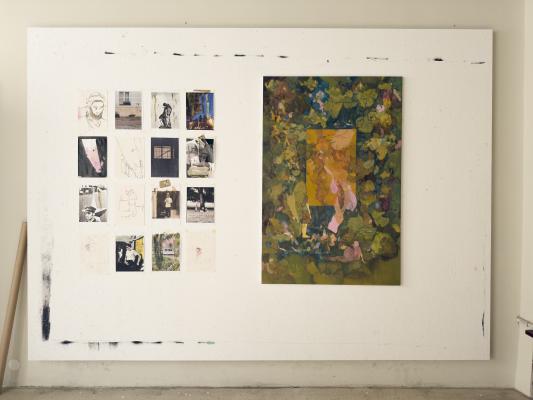
During his month-long summer residency in Olomouc, the Italian painter Giacomo Modolo transformed the Telegraph Gallery building into both his studio and temporary home. At that time, he created a new series of paintings entitled This Is No Time for Heroes – an intimate cycle of works that, in both form and content, resembles a visual diary. Modolo did not aim to produce monumental pieces; rather, he focused on capturing fleeting visual fragments and the atmosphere that accompanied his nocturnal wanderings through the city, which became an almost daily ritual.
Insomnia became a creative catalyst for Modolo, and his night-time walks allowed him to experience the city in a different light – or rather, in darkness. He discovered Olomouc as quiet, empty city, devoid of the bustle of the day, and suffused with a peculiar melancholic energy. Scenes that remain hidden to most people inspired him to create a series of paintings oscillating between figuration and abstraction, reality and dream, between what is recognisable and what remains elusive. As the artist himself notes: "At night, things and places take on a different, less objective quality. They mix together and create new, unexpected forms. In the dark, everything blends without clear references—without a specific time or place."
An inseparable part of Modolo's creative process is his work with photography. He constructs collages from his own photographs as well as found images, which he then transforms according to his imagination and immediate mood. While the resulting paintings often undergo significant visual transformation, their roots remain embedded in the reality of the original image. Modolo uses not only his own photographs, but also images sourced from the internet, social media, newspapers, magazines, and historical publications. This approach allows him to intertwine personal experience with collective memory, reality with fiction, and past with present. His fascination with photography and collage dates back to his student years, when he was captivated by the aesthetics of punk album covers.
The figures appearing in the paintings created during the Olomouc residency are not the protagonists of the narrative. They act more as silent guides through the atmosphere, sometimes almost indistinguishable from the surrounding environment. They function as a quiet backdrop, shaping the overall mood of the scene. The figures, seemingly frozen in time, resemble sculptures and, alongside urban and natural landscapes, constitute one of the central motifs of the series. Another recurring motif is the window, which unifies the entire cycle of paintings and symbolises the transition between the external and internal worlds, the desire for knowledge and the need for escape.
A key principle that runs through Modolo's work is contrast – the tension between light and darkness, between architecture and natural forms, between rigid and organic structures. It is precisely this visual tension that gives his works their inner dynamism and exceptional depth, offering viewers a powerful, introspective experience.
